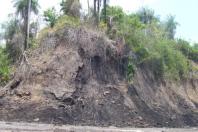"Congo Oil & Gas Report Q4 2013"
Congo Oil & Gas Report Q4 2013: New research report available at Fast Market Research
New Energy market report from Business Monitor International: "Congo Oil & Gas Report Q4 2013"
[USPRwire, Wed Sep 18 2013] BMI View: With production in steady decline and few major projects expected to come on-stream over the next few years, the Republic of Congo (RoC)'s upstream oil outlook does not inspire much confidence. However, Eni's vast oil sands project in the country's south could offer some long-term opportunities. If this project is realised, this would be the first of its kind on the continent.
The main trends and developments for the RoC's oil and gas sector are:
* BMI expects oil production to decline steadily due to most of the production coming from mature fields and the lack of new projects coming onstream. We see liquids production falling from an estimated 292,000 barrels per day (b/d) in 2012 to 264,000b/d in 2022. This relatively gradual decrease is explained by a small number of new projects coming on-stream, offset by a steady decline rate in mature field output.
* Consumption of crude is likely to rise at an average of 4.8% from 2012 to 2022. We therefore anticipate that consumption will rise from an estimated 14,000b/d in 2012 to 22,000b/d by 2022.
* BMI forecasts that gas production will increase from an estimated 1.4bn cubic metres (bcm) in 2012 to 4.8bcm by 2022. Domestic gas use will be boosted by the implementation of enhanced oil recovery techniques that include the reinjection of gas in mature fields to improve natural lift. Gas demand is set to rise at an average annual growth rate of 13.3%. This is explained by the country's strong expected macroeconomic expansion.
* Congolese crude reserves are likely to start declining from their 1.60bn barrels (bbl) peak of the 2007-2011 period. Unless substantial discoveries are made, new deepwater basins opened or oil sands resources proven to be commercially viable, current discovery rates would see reserves falling to 1.36bn bbl in 2017 and then to 1.28bn bbl by 2022. With regards to gas, given the lack of investment in the sector, reserves are likely to continue to remain stuck at their 1997 level of 90.61bcm.
* In the downstream sector, the authorities have struggled to modernise CORAF, the country's sole refinery. Despite an US$868mn investment deal signed with Saudi Arabia's Rawabi Holding Company in February 2008 to increase capacity at the plant to 100,000b/d, there has been no sign of upgrade at the plant. We have not factored any expansion in our forecasts and we see capacity stagnating at 21,000b/d with an average utilisation rate of 66.9% throughout the decade.
Full Report Details at
- http://www.fastmr.com/prod/670993_congo_oil_gas_report_q4_2013.aspx?afid=302


